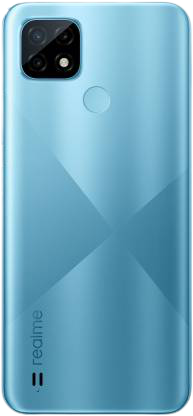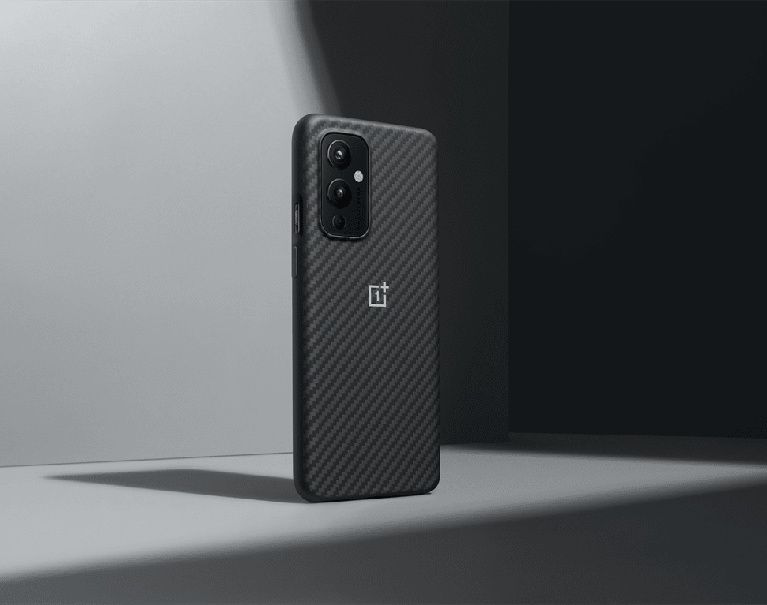Although we’re months away from Apple’s annual iPhone launch event, leaks about the upcoming iPhone 13 lineup have already started popping up. Over the last few months, we’ve learned quite a few details about Apple’s next iPhone lineup from these leaks, and we’ve collated all the information in this post. In case you missed our previous coverage, here’s everything we know about the iPhone 13 series so far:
Apple iPhone 13 series: Release Date
Even though the iPhone 12 series wasn’t launched in September last year due to production delays caused by the COVID-19 pandemic, rumors suggest that Apple will revert to its September launch timeline for the iPhone 13 lineup as it will not face the same production delays. This information comes from renowned Apple analyst Ming-Chi Kuo, who has claimed that Apple will begin mass production of the upcoming models as per its regular schedule. However, it’s worth noting that the global semiconductor shortage may cause unforeseen delays this year as well.
Apple iPhone 13 series: Variants & Pricing
Despite poor iPhone 12 mini sales, Apple will reportedly launch 4 iPhone models this year as well. If Apple adopts the iPhone 13 moniker for the 2021 lineup, the devices will be called iPhone 13 mini, iPhone 13, iPhone 13 Pro, and iPhone 13 Pro Max.

The iPhone 12 series
However, Apple may revive its “s” branding this year since the upcoming models are expected to feature minor upgrades. If that’s the case, the upcoming devices will be called iPhone 12s mini, iPhone 12s, iPhone 12s Pro, and iPhone 12s Pro Max.
Irrespective of the name Apple settles on for the 2021 iPhone lineup, we expect to see four new devices in September this year. These devices will likely be priced the same as the iPhone 12 range, starting at $699 for the iPhone 13 mini and going up to $1,099 for the iPhone 13 Pro Max.
Design
The upcoming iPhones will likely be the same size as their predecessors, with the iPhone 13 mini sporting a 5.4-inch display, the iPhone 13 and iPhone 13 Pro packing 6.1-inch panels, and the top-of-the-line iPhone 13 Pro Max featuring a 6.7-inch display. The phones may also come with the same boxy design as last year, with the two affordable models featuring an aluminum frame and the two Pro models featuring stainless steel frames.

The iPhone 12 Pro Max and the iPhone 12 Mini
While the iPhone 13 lineup may look pretty much the same as the iPhone 12 lineup, rumors suggest that the upcoming models will pack a smaller notch. Leaks suggest that Apple will move the earpiece closer to the edge and offer a shallower True Depth camera on its 2021 lineup to offer a slimmer notch.
Although the notch may get slimmer, industry sources claim that the iPhone 13 lineup will be 0.26mm thicker than the iPhone 12 lineup. The same sources also reveal that the camera module on the iPhone 13 lineup will be a bit larger as well. 0.9mm larger than the older models, to be exact. Leaked images of the display glass for the upcoming iPhones (attached below) give us a preliminary look at what the notch may look like.

Image: MacRumors
The devices are also expected to include stronger magnets for MagSafe charging and other accessories. Rumors also suggest that Apple may offer a matte black colorway on the next-gen iPhone lineup in place of the standard space gray colorway, a new stainless steel coating to reduce smudges and fingerprints, and improved noise cancellation with beamforming for phone calls.
If you’re wondering what the iPhone 13 series may look like, you can check out renders created by Concept Creator in partnership with LetsGoDigital (attached above).
Touch ID
So if the notch isn’t going anywhere, will Apple offer an in-display Touch ID sensor on this year’s models? That may be the case if recent reports are to be believed. According to Bloomberg, Apple has been testing an in-display Touch ID sensor that may make an appearance on the 2021 lineup.
A report from The Wall Street Journal suggests that the Touch ID sensor could be of the optical variety, but we have also heard rumors that Apple may source ultrasonic sensors from Qualcomm and others for its next-gen iPhones. At the moment, we can’t confirm if the iPhone 13 lineup will feature a Touch ID sensor or not, but if it does, it will be made available in addition to the Face ID sensor. Apple doesn’t seem to have any plans to drop Face ID from its upcoming iPhones.
It’s worth noting that Ming-Chi Kuo has claimed that while Apple is working on bringing back the Touch ID sensor on iPhones, it will not make an appearance on the iPhone 13 lineup. Instead, Kuo states that Apple will integrate the Touch ID sensor in the power button on a lower-end model, likely the next iPhone SE.
A recent rumor suggests that the iPhone 13 models are likely to feature an in-display fingerprint scanner in addition to Face ID. However, these rumors haven’t been confirmed by trusted sources so far.
120Hz ProMotion Display
Ahead of the iPhone 12 launch last year, we heard multiple rumors suggesting that the top-of-the-line iPhone 12 Pro Max would feature a 120Hz ProMotion display. However, the feature was delayed due to battery life concerns. This time around, rumors suggest that Apple may finally implement 120Hz displays on two of the four upcoming models. These will likely be both the Pro variants, and they may feature low-power LTPO OLED panels to address any battery life concerns.
Apple will most likely source the 120Hz LTPO OLED panels from Samsung, and reports suggest that BOE may also supply some displays for the other two models. Leaks also suggest that Apple will use Y-OCTA display technology on the upcoming models, which allows touchscreen circuitry to be patterned on the OLED panel without needing a separate layer. This makes the displays a bit thinner and more affordable.

Thanks to the LTPO OLED panels on the Pro variants, Apple may also offer an Always-on Display feature on the upcoming phones. In a video by renowned Apple leaker EverythingApplePro, Max Weinbach claims that the iPhone 13 lineup will include an always-on display feature that will look like a simpler version of the iOS lock screen with a clock and battery charge levels. The Always-on display feature will also be used to display notifications, but it won’t light up the entire screen for incoming notifications to conserve battery.
While some rumors also suggest that Apple may offer a portless iPhone this year, Ming-Chi Kuo has dispelled these rumors and claimed that Apple will continue using the Lightning connector on the 2021 lineup. Sadly, that means that we aren’t going to get a USB Type-C port on the iPhones for another year. Apple’s own laptops and tablets mostly use USB-C, but the iPhones still won’t.
Cameras
While the iPhone 13 lineup may not feature many significant upgrades over the iPhone 12 lineup, Apple will likely offer notable improvements on the camera front. Recent leaks suggest that the entire iPhone 13 lineup will feature sensor-shift stabilization, which debuted with the iPhone 12 Pro Max last year. This is expected to enhance low light performance and video stabilization by reducing camera shake. While we can be sure that the feature will be available on the primary camera, Apple may extend it to the ultra-wide camera on some models.
Additionally, leaks suggest that the high-end iPhone 13 Pro models will get an upgraded ultra-wide camera with a six-element lens and f/1.8 aperture. This should help improve low-light performance when compared to the current f/2.4 wide-angle cameras. While some reports suggest that Apple will extend the new ultra-wide camera to all models, Kuo maintains that it will only be available on the Pro variants. Apple may also offer improved autofocus capabilities in the upcoming lineup, but we haven’t seen any reports regarding this feature so far.

Max Weinbach also claims that the iPhone 13 models will feature an astrophotography mode like the Google Pixel 4. This mode will allegedly turn on automatically when you point the cameras at the sky and allow the iPhone to detect the moon and stars and adjust the exposure to help you take a great shot. Weinbach further claims that the iPhone 13 lineup will come with support for Portrait Mode videos, but we haven’t seen any concrete evidence to support these claims.
Apple added a LiDAR scanner to the iPhone 12 Pro and the iPhone 12 Pro Max last year. While some leaks suggested that the scanner would make its way to all four devices in the iPhone 13 lineup, Ming-Chi Kuo believes that it will be limited to the Pro models.
SoC, RAM & Storage
The iPhone 13 lineup is expected to come with a 5nm+ A15 chip manufactured by TSMC. At the moment, we haven’t heard any specific details about the A15 chip, but you can expect it to offer better performance and efficiency than previous versions. The phones may also feature Qualcomm’s Snapdragon X60 model for 5G, which will also offer better power efficiency than the Snapdragon X55 modem found on last year’s lineup.
According to recent reports, some iPhone 13 models may only feature single 5G band support, with either mmWave or sub-6GHz network capabilities. Additionally, reports suggest that iPhone 13 models may come with Wi-Fi 6E support, which offers increased bandwidth over existing 2.4GHz and 5GHz bands.
We’ve seen some rumors suggesting that the iPhone 13 lineup may offer up to 1TB of internal storage, which is a significant jump from the 512GB maximum capacity offered on the iPhone 12 lineup. However, since no reliable source has confirmed this rumor so far, we’d recommend that you take it with a grain of salt.
Battery
The iPhone 13 lineup is also rumored to come with larger batteries. Reports claim that Apple will use a new space-saving design on the upcoming models to integrate the SIM slot with the mainboard and reduce the front optical module’s size to make more space for the battery. This, coupled with the increased thickness, should help Apple cram larger batteries on the next-gen iPhones, resulting in longer battery life.
iOS 15
Information about iOS 15 has been scarce so far as we’re still quite a few months away from the first release. Apple will showcase the update at WWDC 2021, which will take place in June. Apple hasn’t shared exact dates for the event at the moment, but we expect the company to release some info about a month in advance.
After the preview at WWDC, Apple will roll out iOS 15 to developers and then to a public beta testing group later in the summer. A stable release should be ready in the fall and it should start rolling out alongside the new iPhone 13 lineup in September this year.
Apple’s WWDC 2021 event is scheduled to take place from June 7 to June 11. We expect to learn more about iOS 15 and the next major upgrades for iPadOS, macOS, watchOS, and tvOS at the event.
Apple iPhone 13 series: Our feature wishlist
If all the aforementioned leaks and rumors are to be believed, it looks like some of the features that we wanted to see on the upcoming iPhone 13 lineup are going to materialize after all. This includes a 120Hz refresh rate panel, a smaller notch, and Always-on display support. But there are still a few things that we want to see on the next-gen iPhone lineup that haven’t been confirmed so far.
First of all, Apple could (and should) roll out new software features with the upcoming iPhone lineup for better one-handed use. As my colleague Ben has pointed out in the past, the iPhone 12 Pro Max is hard to use with one hand due to the lack of a one-handed mode in iOS. Since Apple already has a version of iOS optimized for large displays (iPadOS), it would make sense for the company to release similar optimizations for the iPhone 13 Pro Max.
Secondly, we expect to see a better telephoto camera on the upcoming iPhone models. While we have seen rumors suggesting that Apple is working on a Periscope zoom lens for an iPhone, we can’t be sure if it will make an appearance with the iPhone 13 lineup.
Faster charging support is the third most important thing we want to see on the upcoming iPhone models. The current iPhone lineup only supports up to 20W fast wired charging, which is quite slow in comparison with what most Android phones have on offer these days. Although we don’t expect Apple to offer a 65W or a 120W fast charging solution on the next-gen iPhones, a 30W solution would definitely be ideal.
And to top it up, we’d like to see Apple experiment with a curved display too. None of the iPhones so far have tried their hand at this trend that Android seems to have wholeheartedly accepted. A subtle curve on the display adds to the premium feeling of the device and even helps a bit with the ergonomics, while a waterfall curve is much more eye-catching and can be accomplished if paired with good palm-rejection features.
Sadly, none of the leaks that we’ve seen so far mention any of the aforementioned features. So we can’t be sure if these features would make their way to the upcoming models or not.
What your opinion of the iPhone 13 lineup based on the leaks and rumors mentioned above? Are you disappointed by the minor upgrades or are you looking forward to upcoming devices? Share your thoughts in the comments section below.
The post Apple iPhone 13 Rumor Roundup: Here’s everything we know about the next iOS flagship phone series appeared first on xda-developers.
from xda-developers https://ift.tt/3pU9zQR
via IFTTT
























